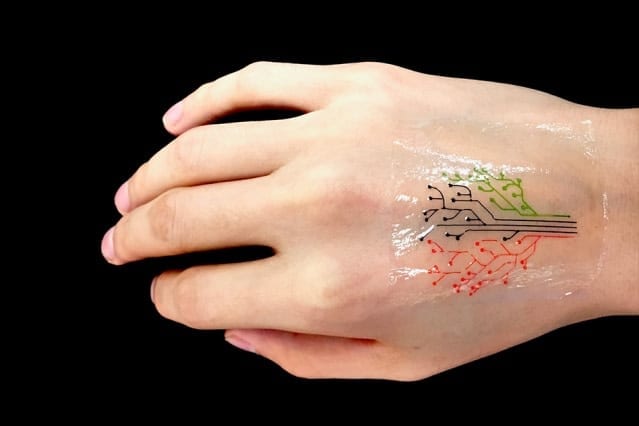
Photo by Sunny Burns, ARDEC/U.S. Army
The next few decades could yield new tools for criminals, new security threats, and new challenges to the world economic order—all built layer by layer by 3D printers.
3D printers already produce everything from prosthetic hands and engine parts to basketball shoes and fancy chocolates. But as with any technological advance, new possibilities come with new perils.???????
A new RAND paper, Additive Manufacturing in 2040: Powerful Enabler, Disruptive Threat, explores how 3D printers will affect personal, national, and international security. The paper is part of RAND’s Security 2040 initiative, which looks over the horizon to anticipate future threats.
The same technology that might one day custom-print heart valves can just as easily produce gun parts. The same machines that allow astronauts on the international space station to print their own tools might also help a state like North Korea print military or industrial equipment to get around international sanctions. Here are four areas to watch as 3D printing makes the leap from high tech to home tech.
Hackers Could Use Printers to Cause Real-World Damage
For one minute and 43 seconds, nothing about the small drone’s flight seemed unusual. Then one of its propellers blew apart. The drone lurched to one side, wobbled, and plummeted to the ground, shattering on impact.
The 2016 experimentdemonstrated the ease with which hackers could turn malicious code into real-world damage with a 3D printer. A team of university researchers had hacked into a desktop computer and altered a few lines of code in the 3D blueprint for the drone’s propeller. The printed propeller looked flawless, even under close scrutiny—but microscopic weaknesses in its blade doomed it to fail. It was an unsettling lesson, especially as 3D printers manufacture more and more critical parts, including airplane engine components.?????????????????????
Those industrial printers have much more rigorous defenses than a home computer. But committed hackers can usually find their way into even the most-sensitive networks—as the Pentagon, the White House, and any number of hospitals can attest. The result could be a new kind of threat: cyber sabotage in the physical world.
The result [of hackers infiltrating digital blueprints] could be a new kind of threat: cyber sabotage in the physical world.
“Right now, if you have a cyber hack, then, worst-case scenario, your information gets compromised and you have to cancel a credit card or fight some kind of identity theft,” said Troy Smith, an associate economist at RAND and co-author of the paper. “I don’t want to minimize that. But with digital becoming physical, you could implant weaknesses into airplanes, into military tanks, into buildings. You could target people by implanting some kind of flaw that causes their personal devices to critically malfunction.”???????
The 2016 drone experiment was meant to be a wakeup call, especially for companies looking to manufacture critical parts with 3D printers. As team member Mark Yampolskiy, a computer science professor at the University of South Alabama put it: “They should start investing heavily in security.”
Yampolskiy’s team is working on an answer. It has developed a computer algorithm that can listen to the sounds of a working printer and detect even tiny deviations in its output.
Printers Could Enable New Criminal and Security Threats
Learn more: Four Ways 3D Printing May Threaten Security
The Latest on: 3D printing threatens security
[google_news title=”” keyword=”3D printing threatens security” num_posts=”10″ blurb_length=”0″ show_thumb=”left”]
via Google News
The Latest on: 3D printing threatens security
- Researchers Develop System to Detect and Sanitize Steganography in 3D Modelson April 25, 2024 at 9:43 am
“Steganography is the practice of representing information within another message or physical object, in such a manner that the presence of the information is not evident to human inspection. In ...
- HP's Next Gen Antivirus Given Perfect Score In Independent Teston April 25, 2024 at 8:11 am
Protection: Assessing the ability of the antivirus to safeguard against malware and various cyber threats. Performance: Measuring the speed and efficiency of the antivirus software across different ...
- The world’s largest 3D printer is at a university in Maine. It just unveiled an even bigger oneon April 24, 2024 at 2:45 pm
The university that boasts the world’s largest 3D printer developed one even bigger. And it’s poised to help tackle one of America’s biggest problems of all.
- Modernizing our supply chain is a national security imperativeon April 24, 2024 at 6:41 am
Closing supply chain gaps in innovating technology will reposition the industrial base to be a strategic source of value.
- AM Prep-Cyber Corneron April 24, 2024 at 12:05 am
Senate passes bill forcing TikTok’s parent company to sell or face ban, sends to Biden for signature ...
- Do You (Really) Need A Chief Artificial Intelligence Officer?on April 23, 2024 at 1:56 pm
How should organizations manage the tsunami of artificial intelligence, which affects all aspects of the business?
- Zscaler's Potential Upside Continues to Explodeon April 23, 2024 at 4:05 am
For a stock that was just starting to experience what a 200% rally felt like, the past month has sure been a wake-up call for Zscaler Inc (NASDAQ: ZS). Having caught the wave of risk-on sentiment that ...
- Here are the 30+ startups showcasing at HAX's May 1 Demo Dayon April 22, 2024 at 2:39 pm
A few weeks back, TechCrunch ventured out to New Jersey to pay an early visit to HAX’s Newark offices. HAX’s China operations have shrunk considerably since then, courtesy of a global pandemic and all ...
- Russia-Ukraine war: Zelenskiy signs new mobilisation law in effort to boost Ukraine’s exhausted forces – as it happenedon April 16, 2024 at 7:00 am
Kyiv brings in higher payments for volunteers and new punishments for draft dodgers ...
via Bing News










